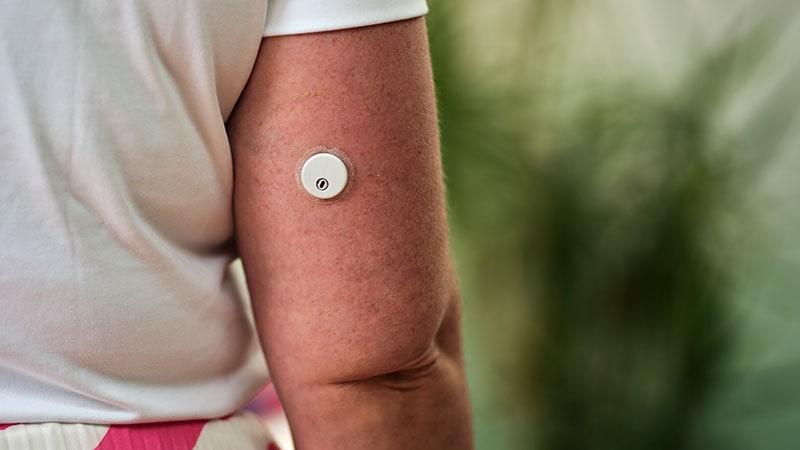Tech
Continuous Glucose Monitoring Can Aid Hospital Patients

ORLANDO, FL — Continuous glucose monitoring (CGM) of hospitalized patients with diabetes could provide early and important clues about changing insulin needs and reduce the need for many blood draws. However, more research is required to create the processes needed to make the most of this approach to care.
That was the message of researchers who presented their research on CGM testing here at the American Diabetes Association (ADA) 84th Scientific Sessions. Some of the most advanced research on CGM use in hospitalized patients has been conducted at Stanford Medicine, where CGM results have been integrated into electronic health records (EHRs).
CGM results appeared to fall within acceptable ranges for 99.3% of samples checked against finger-stick blood glucose (FSBG) testing, or paired validations, said Susan Seav, MD, of Stanford Medicine, California.
The project used the methdology of a Clarke error grid analysis to check CGM results against FSBG. Most of the paired CGM-FSBG results — 87.7% or 1315 of 1506 — fell into Clarke zone A, meaning they were considered clinically accurate.
Another 11.6% fell into Clarke zone B, which is considered a benign error, meaning these readings would likely not lead to inappropriate treatment. Less than 2% fell into the more concerning lower Clarke zones C, D, and E.
“Our data are reassuring that CGM use in the hospital would be safe for insulin use, but I would say that cautiously because we didn’t evaluate for safety events,” Seav told Medscape Medical News in an interview.
The project, which involved 135 patients, shows it could be feasible to integrate CGM monitoring into EHRs, although more research is needed, Seav said.
There is a growing need to address the potential for CGM use for hospitalized patients due to the rising popularity of these devices, such as the Dexcom and Libre monitors.
A 2023 study based on survey data found the prevalence of CGM use among people with diabetes in the United States rose from 0.4% in 2014 to 4.1% in 2020, Seav noted during her presentation. In addition, another study, which used EHRs at a large academic medical center in the Southeastern United States, found monthly rates of CGM prescriptions for new users grew 36% from 2020 to 2021.
The ADA supports continued use of CGM when clinically appropriate during hospital stays. The Endocrine Society recommends use of CGM with confirmatory bedside point-of-care blood glucose monitoring for adults with insulin-dependent diabetes hospitalized for noncritical illnesses who are at risk of hypoglycemia.
Yet hospital staff, including nurses, often don’t know what to do when their patients are using CGMs.
“They don’t know what a CGM is, let alone how it works,” Seav said. “More importantly, how do nursing staff or private teams know if this is permitted or safe to continue to use?”
In response, Seav and Ming Yeh Lee, MD, PhD, and colleagues designed a protocol to try to address these questions. Working under the direction of Michael S. Hughes, MD, this Stanford team followed the 135 volunteers through 185 hospitalizations. They found patients and nurses saw advantages to continued use of CGM.
Looking at the results of 46 patients’ experiences, the Stanford researchers found 63% reported liking the way their blood sugar had been monitored. Results for 27 nurses who reported on their experiences found 80% preferred CGM to FSBM.
Researchers also are just beginning to look at whether CGM could improve outcomes for patients.
At the ADA session, Kristen L. Flint, MD, of Massachusetts General Hospital, Boston, noted that few studies have been conducted to see if CGM could affect hospital-related clinical outcomes in the inpatient setting.
She then presented the results of a 326-patient study conducted at Massachusetts General Hospital from July 2021 to May 2023.
This study involved patients who were seen outside the intensive care unit (ICU), with participants thus staying on floors such as oncology, surgery, and neurology. All participants had a blinded Dexcom sensor placed, thus, real-time sensor data were not available to the medical teams. These sensors were removed early when participants were transferred to the ICU or if they needed an MRI, she said.
Using multivariable regression analyses, Flint and colleagues found that hyperglycemia identified by CGM was associated with 30-day emergency room visits.
“From this we feel that CGM may help identify patients in the hospital who would benefit from increased support after hospital discharge,” she said.
Larger longer-term studies are needed to fully answer questions about the potential of CGM to improve post-discharge outcomes, Flint said. She also noted that in the study she presented, glycemic variability patients experienced may not have been detected, in part because they did not use modifiers for severity of illness. The study also may not have picked up glucose fluctuations patients experienced earlier in their stays.
“I do wonder if you put a CGM on a patient in the beginning and you collect all of that data if we might have stronger associations with outcomes,” she said.
Michael Hughes has reported receiving funding from the National Institutes of Health (NIH)/National Institute of Diabetes and Digestive and Kidney Diseases (NIDDK) and has served as a consultant for Dexcom. Flint has reported receiving support from the NIH/NIDDK and an investigator-initiated study grant from Dexcom.
Kerry Dooley Young is a freelance journalist based in Washington, DC.










